
Picking out an iPhone used to be easier—just get the newest one with all the storage you can afford. We still recommend buying as much storage as you can afford, but the choice of which iPhone to get it on isn’t quite so simple. Apple currently sells eight iPhone models, four of which launched in fall 2023, two in fall 2022, one in spring 2022, and one in 2021. Plus you can still buy older refurbished models from the Apple Refurbished Store and elsewhere. Apple offers all this choice because, quite simply, different people have different priorities.
Apple’s latest iPhone lineup includes the iPhone 15, iPhone 15 Plus, iPhone 15 Pro and iPhone 15 Pro Max, which it sells alongside the iPhone 14, iPhone 14 Plus, iPhone 13, and iPhone SE (3rd gen). The “best” iPhone depends on your own personal preferences, so it’s not necessarily the case that the number one iPhone is the one you should buy. This group test of all the iPhones Apple sells should give you a good idea of which iPhone will suit you, and whether you can save money or if it would be worth spending more.
For more help choosing the iPhone for you read our Buying Guide where we explain how each iPhone is different in terms of price, specs and features, cameras, screens, and durability. See: Which iPhone should I get?
iPhone specs compared
Apple sells four current-generation model iPhones: the iPhone 15, 15 Plus, 15 Pro and 15 Pro Max. You can also buy the iPhone 13, iPhone SE (3rd gen). Here’s how their most important specs compare, but remember, specs aren’t everything! We’ve put these in price order, so scroll across to find the phone you are after.
| iPhone SE (3) | iPhone 13 | iPhone 14 | iPhone 14 Plus | iPhone 15 | iPhone 15 Plus | iPhone 15 Pro | iPhone 15 Pro Max | |
|---|---|---|---|---|---|---|---|---|
| Current price | $429/£429 | $599/£599 | $699/£699 | $799/£799 | $799/£799 | $899/£899 | $999/£999 | $1,199/£1,199 |
| Screen size | 4.7″ | 6.1″ | 6.1″ | 6.7″ | 6.1″ | 6.7″ | 6.1″ | 6.7″ |
| Size (H x W x D) | 5.45″ x 2.65″ x 0.29″ | 5.78″ x 2.82″ x 0.30″ | 5.78″ x 2.82″ x 0.31″ | 6.33″ x 3.07″ x 0.31″ | 5.81″ x 2.82″ x 0.31″ | 6.33″ x 3.06″ x 0.31″ | 5.77″ x 2.78″ x 0.32″ | 6.29″ x 3.02″ x 0.32″ |
| Weight | 5.09 oz | 6.14 oz | 6.07 oz | 7.16 oz | 6.02 oz | 7.09 oz | 6.60 oz | 7.81 oz |
| Colors | Starlight, midnight, red | Pink, blue, midnight, starlight, red | Blue, purple, midnight, starlight, red | Blue, purple, midnight, starlight, red | Pink, yellow, green, blue, black | Pink, yellow, green, blue, black | Natural, blue, white, black | Natural, blue, white, black |
| Display | LCD (326 ppi) | OLED with HDR (460 ppi) | OLED with HDR (460 ppi) | OLED with HDR (458 ppi) | OLED with HDR (460 ppi) 2000 nits peak brightness (outdoor) |
OLED with HDR (460 ppi) 2000 nits peak brightness (outdoor) |
OLED with HDR (460 ppi), ProMotion 120Hz 2000 nits peak brightness (outdoor) |
OLED with HDR (460 ppi), ProMotion, 120Hz 2000 nits peak brightness (outdoor) |
| Processor | A15 Bionic (4-core GPU) | A15 Bionic (4-core GPU) | A15 Bionic (5-core GPU) | A15 Bionic (5-core GPU) | A16 Bionic (5-core GPU) | A16 Bionic (5-core GPU) | A17 Pro (6-core GPU) | A17 Pro (6-core GPU) |
| Storage | 64/128/256GB | 128/256/512GB | 128/256/512GB | 128/256/512GB | 128/256/512GB | 128/256/512GB | 256/512GB/1TB | 256/512GB/1TB |
| Authentication | Touch ID | Face ID | Face ID | Face ID | Face ID | Face ID | Face ID | Face ID |
| Rear Camera | 12MP f/1.8 Wide camera | 12MP f/1.6 Wide camera, 12MP f/2.4 Ultra Wide camera |
12MP f/1.5 Wide camera, 12MP f/2.4 Ultra Wide camera |
12MP f/1.5 Wide camera, 12MP f/2.4 Ultra Wide camera |
48MP f/1.6 Wide camera, 12MP f/2.4 Ultra Wide camera |
48MP f/1.6 Wide camera, 12MP f/2.4 Ultra Wide camera |
48MP f/1.78 Wide camera, 12MP f/2.2 Ultra Wide camera (macro), 12MP f/2.8 Telephoto (3x) |
48MP f/1.78 Wide camera, 12MP f/2.2 Ultra Wide camera (macro), 12MP f/2.8 Telephoto (3x) |
| Front Camera | 7MP f/2.2 camera, 1080p | 12MP f/2.2 camera, 4K HDR | 12MP f/1.9 camera, 4K HDR | 12MP f/1.9 camera, 4K HDR | 12MP f/1.9 camera, 4K HDR | 12MP f/1.9 camera, 4K HDR | 12MP f/1.9 camera, 4K HDR | 12MP f/1.9 camera, 4K HDR |
| Battery capacity | 1,821mAh | 3240mAh | 3,279 mAh | 4,325 mAh | TBC | TBC | TBC | TBC |
| Wireless features | 5G (sub-6 only), Wi-Fi 6, Bluetooth 5.0, NFC |
5G, Wi-Fi 6, Bluetooth 5.0, NFC, Ultra Wideband |
5G, Wi-Fi 6, Bluetooth 5.0, NFC, Ultra Wideband |
5G, Wi-Fi 6, Bluetooth 5.0, NFC, Ultra Wideband |
5G, Wi-Fi 6, Bluetooth 5.3, NFC, 2nd-gen Ultra Wideband |
5G, Wi-Fi 6, Bluetooth 5.3, NFC, 2nd-gen Ultra Wideband |
5G, Wi-Fi 6E, Bluetooth 5.3, NFC, 2nd-gen Ultra Wideband |
5G, Wi-Fi 6E, Bluetooth 5.3, NFC, 2nd-gen Ultra Wideband |
| Port | Lightning | Lightning | Lightning | Lightning | USB-C | USB-C | USB-C | USB-C |
| MagSafe | No | Yes | Yes | Yes | Yes | Yes | Yes | Yes |
1. iPhone 15 Pro – Best new iPhone
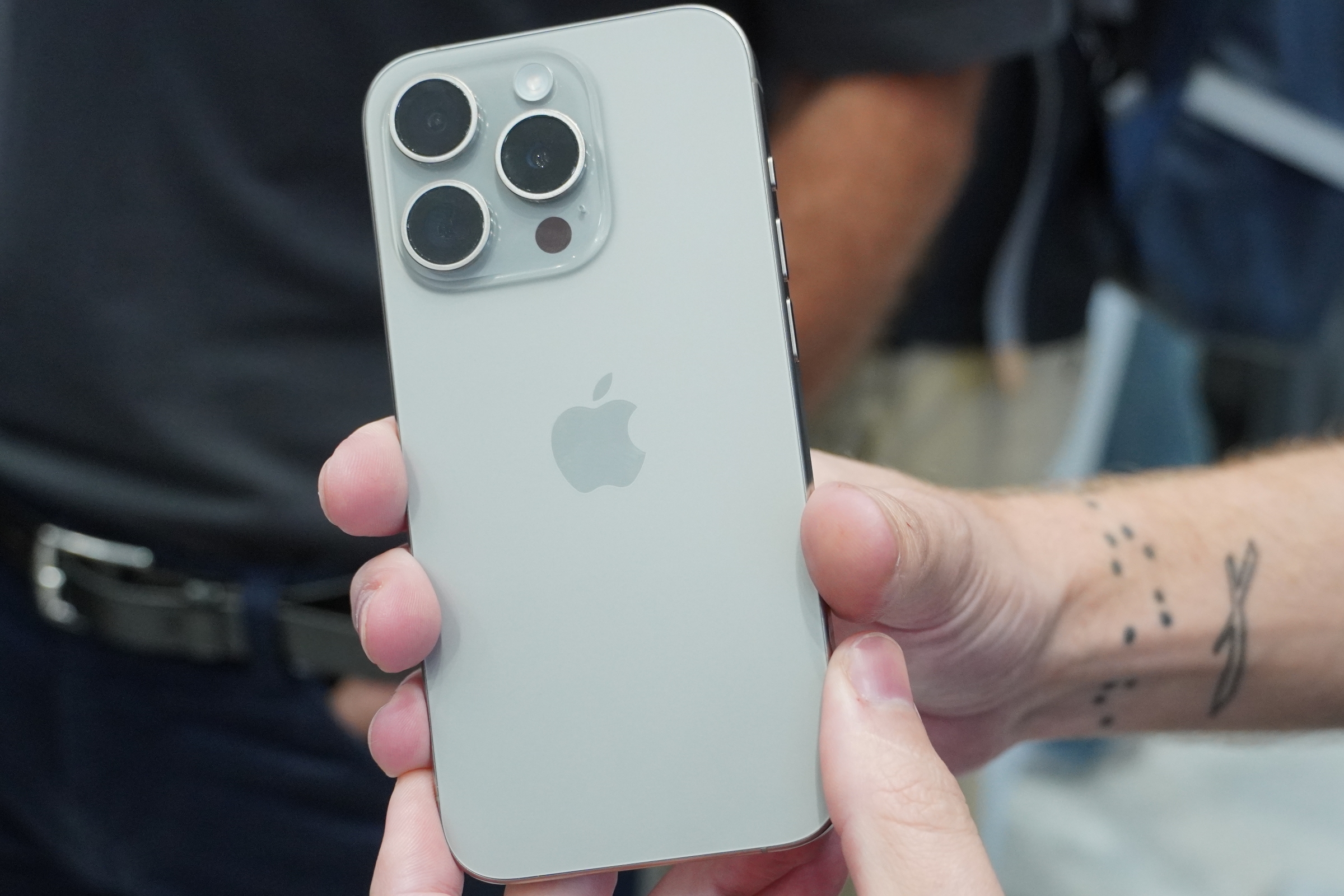
Pros
- Customizable Action Button
- Powerful A17 Pro chip
- USB-C port with support for USB 3 and DisplayPort
- Camera improvements over predecessor
Cons
- Boring color options
- Some features are waiting on software updates
Price When Reviewed:
$999
The iPhone 15 Pro is made from Titanium rather than stainless steel, a first for the iPhone line. Titanium is stronger and lighter than stainless steel, and unsurprisingly the iPhone 15 Pro is 9% lighter than its predecessor at 6.60oz compared to 7.27oz. There are four shades to choose from In four shades: Black Titanium, White Titanium, Blue Titanium, and Natural Titanium. You’ll still need a case though as that titanium is still covered in glass, see: Best iPhone cases.
Also bringing the weight down is the slight reduction in the size of the handset, made possible because Apple has reduced the size of the bezels around the display.
Another new feature is the Action Button, which replaces the mute switch on the side of the Pro iPhones. When ‘pressed’ you get a haptic response and the Dynamic Island animates. It’s customizable so it can be set to quickly perform complex actions, launch any apps, launch the camera, start a voice recording, and so on.
Inside the iPhone 15 Pro is the A17 Pro processor. This is the first 3nm chip to appear in a consumer device. Apple claims that the two high-performance CPU cores are “10 percent faster”, the four high-efficiency cores are “faster”, the 6-core GPU (there were 5-cores in the 14 Pro) offers “20% faster peak performance and better energy efficiency”, and the Neural Engine is “up to twice as fast”.
Estimated battery life is the same as the iPhone 14 Pro at up to 23 hours video playback and fast-charge is still 50% in 30 minutes when plugged into a 20W adapter. Speaking of charging, you will be able to charge an Apple Watch or a set of 2nd-gen AirPods Pro by plugging them into your phone, aka reverse charging.
Another big difference for 2023 is that the iPhone 15-series replaces the Lightning port with USB-C. This brings a number of benefits, particularly to the the Pro models, which gain a faster USB 3 connection offering up to 10 Gbps of bandwidth. The new ports also have DisplayPort support, so they all can output video at up to 4K/60Hz to an external display.
The iPhone 15 Pro also offers Wi-Fi 6E, while the standard iPhone 15 sticks with Wi-Fi 6, like the iPhone 14 range. The 15 Pro models are also the only ones to gain the low-power home networking mesh networking technology Thread. All 2023 iPhones also get the second-generation U2 Ultra Wideband chip that is more accurate at a greater distance.
As for the camera, on paper, it doesn’t look like a huge generational difference, but in reality, the 48MP main camera on the newer iPhone is larger than the predecessor’s (and larger than the new 48MP camera on the iPhone 15). Like the iPhone 15, the Pro model shoots a new default 24MP HEIF image. This 24MP mode can use different areas of the image sensor to produce three different zoom levels: equivalent to 24mm, 28mm, and 35mm lenses. The telephoto camera on the iPhone 15 Pro is an improved 12MP camera, still with a 3x zoom (or 77mm equivalent).
2. iPhone 15 Pro Max – Best for photography features
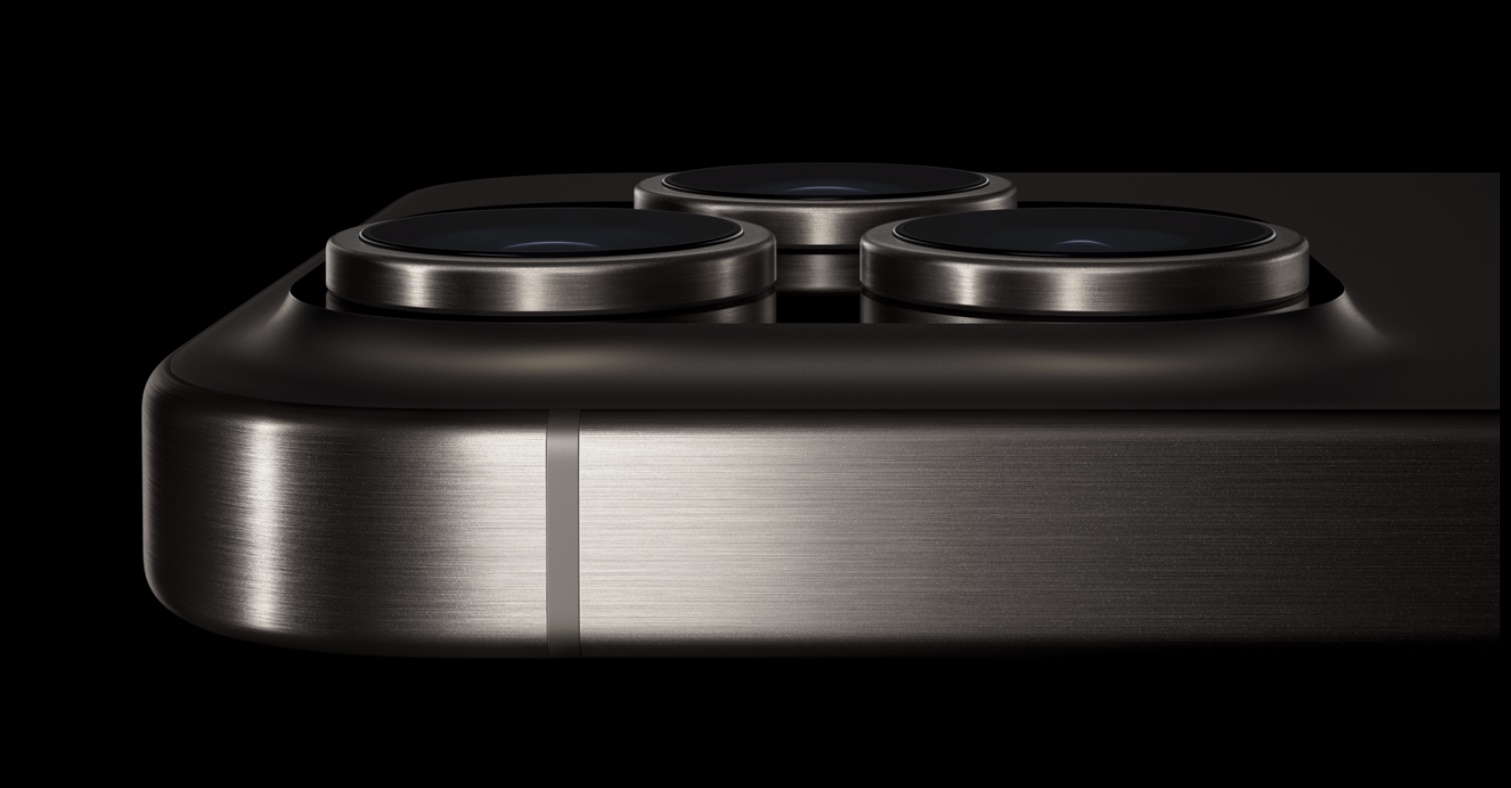
Pros
- 5x optical zoom and other camera improvements
- Smaller and lighter
- Action Button
Cons
- May be too big for some users
- Some features require software updates and are not yet available
Price When Reviewed:
1,199
Apple’s Pro Max iPhones are generally a larger version of the standard Pro model, but sometimes they offer a few extra features, and for 2023 the Pro Max model is much more than a big iPhone 15 Pro thanks to some new camera tech including a 5X zoom on the telephoto camera.
Like the Pro model, the iPhone 15 Pro Max features a Titanium exterior (covered in glass) that comes it the same four shades: Black Titanium, White Titanium, Blue Titanium, and Natural Titanium. Like the standard Pro model. the 15 Pro Max itself is smaller, thanks to the reduced bezels, and lighter than its predecessor at 7.81oz rather than 8.47oz.
Both Pro models also offer the same A17 Pro processor, Apple’s first 3nm chip. Apple makes some strong claims about it, as you can see from the iPhone 15 Pro details above. The GPU in both of 2023’s pro iPhones is up from 5 to 6-cores, compared to 2022’s equivalents, and use a new shader architecture. There are new graphics features like mesh shading and it offers hardware ray tracing acceleration, which Apple claims is the fastest in any smartphone and up to four times faster than software ray tracing. Apple has incorporated a hardware AV1 decoder for the first time.
The iPhone 15 Pro Max gets a new “tetra prism” periscope lens that bounces light four times internally for a longer focal length: 120mm, or a 5x zoom. This is a big increase over the 3x/77mm telephoto camera on the iPhone 15 Pro. The digital zoom also increases from 15X to 25X.
The new ultra-wide camera, in both of the pro iPhones, gets a new anti-glare lens coating and better night mode quality.
Both of 2023’s Pro models feature the Action Button, which replaces the mute switch. The button is customizable so it can be used to perform complex actions, launch any apps, launch the camera, or start a voice recording.
3. Apple iPhone 15 – Cheapest new iPhone
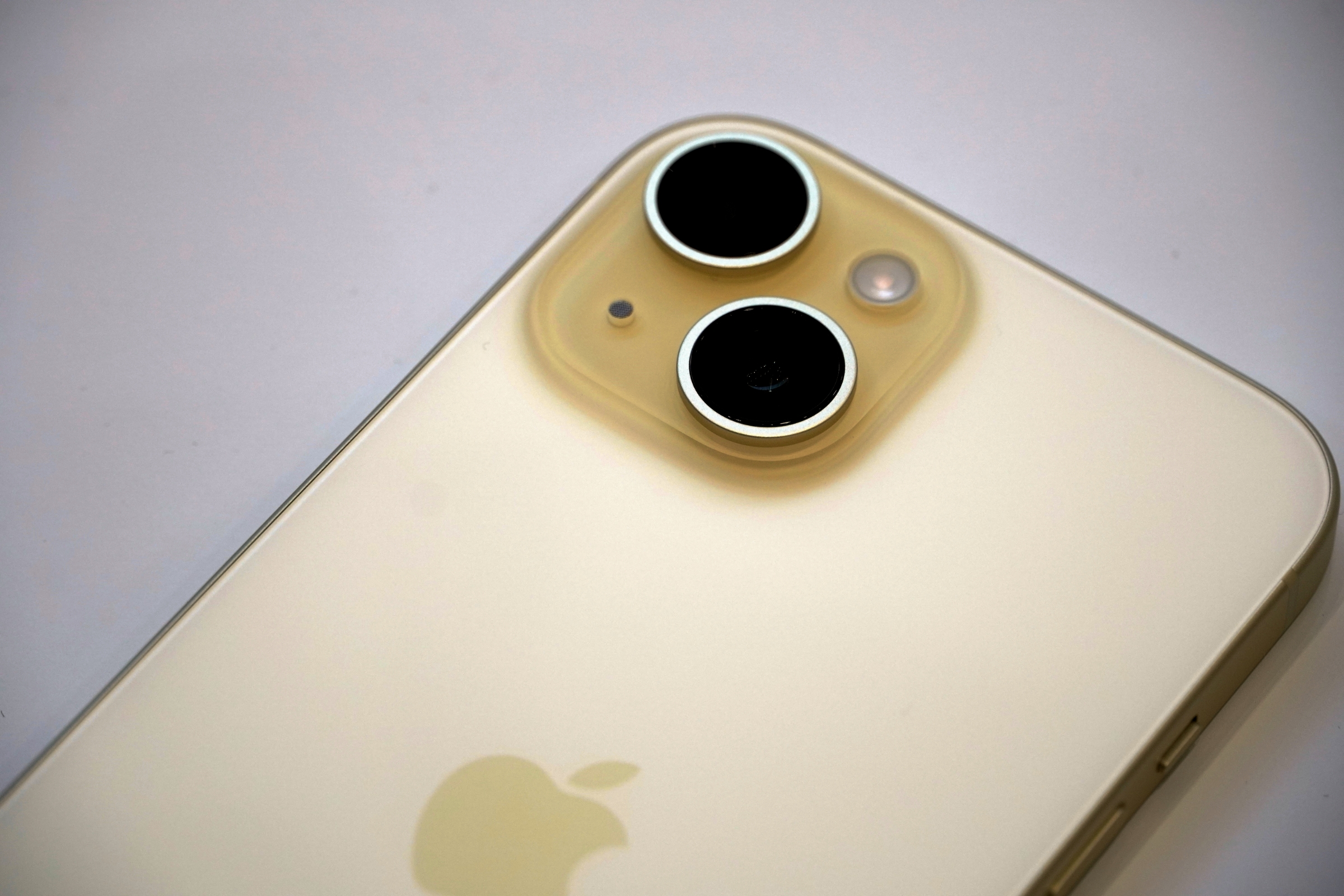
Pros
- Good value for money
- Much better camera
- Cheaper than the iPhone 14 was in 2022
Cons
- No Always-On Display
- No Pro Motion
Price When Reviewed:
$799
While the standard iPhone 15 model doesn’t get all the bells and whistles of the Pro models, it does offer some great new features in comparison to 2022’s iPhone 14.
First up is the Dynamic Island, the breakthrough feature of the iPhone 14 Pro and Max which transforms the notch into something a little more useful. The iPhone 15 doesn’t get the other features of the iPhone 14 Pro though: there’s no ProMotion and no Always-On display, for example.
The camera for the iPhone 15 is also better than the predecessor’s. It gains a dual-lens rear camera with 48MP f/1.6 Main, 12MP f/2.4 Ultra Wide; and up to 2X optical zoom. That’s compared to the 12MP Main with ƒ/1.5 aperture in the iPhone 14. Like all the 2023 iPhones it also gains Smart HDR 5.
This year’s colors: black, blue, green, yellow, and pink are a bit more muted than the bolder blue, purple, yellow, midnight, starlight and Product Red of last 2022.
Where the iPhone 15 Pro models are smaller, due to reduced bezels, the iPhone 15 is actually a tiny bit taller than the iPhone 14 at 5.81in (147.6cm) compared to 5,78in (146.7mm). It also weighs a fraction more than the predecessor did.
All the 2023 iPhones offer a USB-C port where the Lightning port once was. It seems the USB-C port on the Pro models offers some more pro features though, for example, the USB-C on the iPhone 15 supports USB 2 while the same port on the iPhone 15 Pro supports USB 3 up to 10GB/s.
The iPhone 15 gets the processor of the iPhone 14 Pro, the A16 Bionic. It has a 6-core CPU and a 5-core GPU and should offer a nice boost compared to that in the iPhone 14.
All this and the iPhone 15 starts at $100/$100 less than the iPhone 14 did in 2023. The iPhone 14 was $829/£849 at launch, the iPhone 15 is $799/£799.
4. Apple iPhone 15 Plus – Get a big iPhone for less
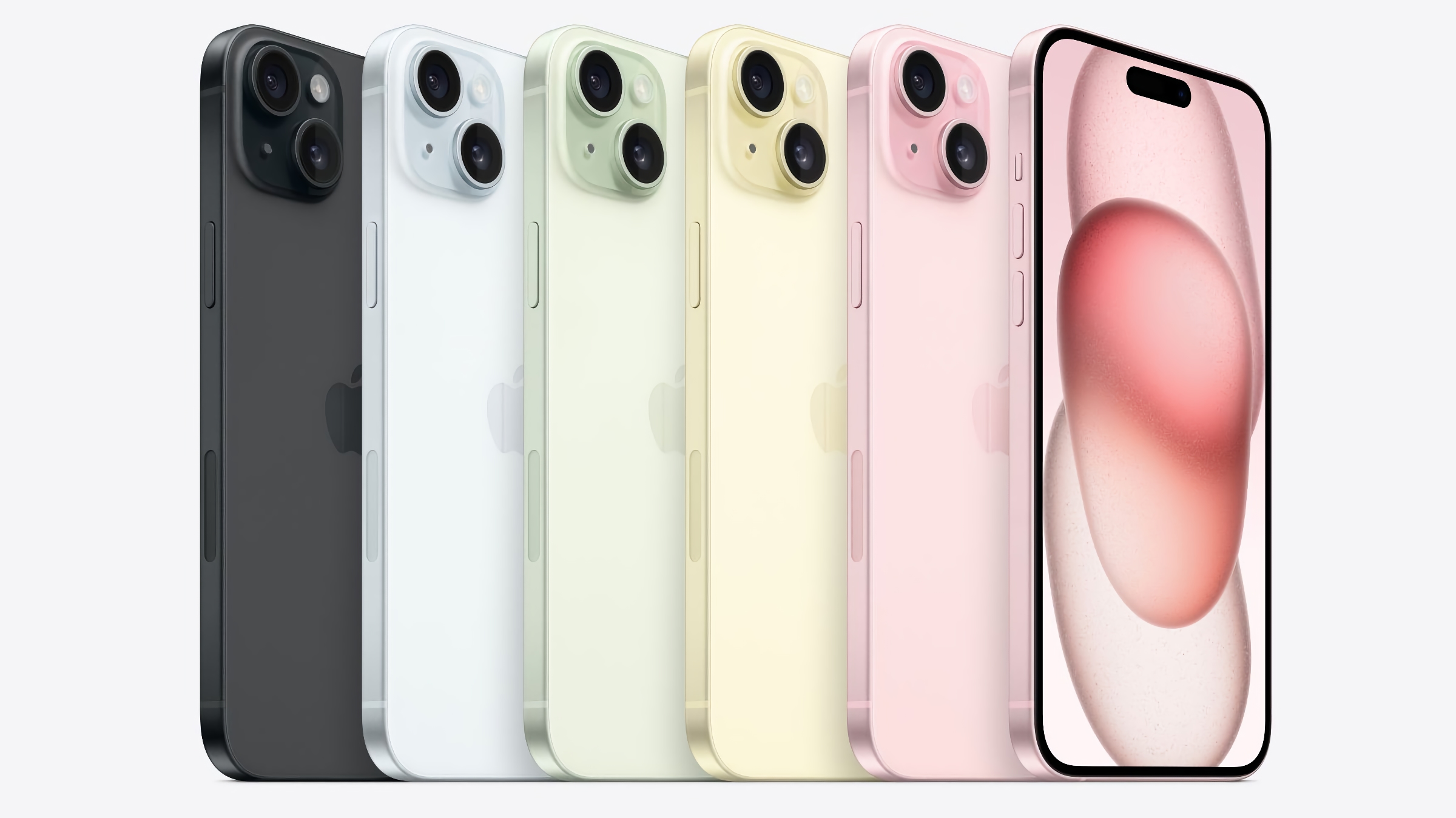
Pros
- Lower price than the 2022 Plus started at
- A16 Bionic
- Lighter than the Pro Max model
Cons
- No Always-On Display
- No Pro Motion
Price When Reviewed:
$899
The iPhone 15 Plus is essentially a larger version of the iPhone 15 and it shares the same features, including the new USB-C port and A16 Bionic chip with 6-core CPU and 5-core GPU).
It has a 6.7-inch display like the iPhone 15 Pro Max, but is actually slightly larger than the pro variant. Despite this it’s lighter than the Pro Max at 7.09oz rather than 7.81oz, and is also lighter than the 2022 Plus model was.
The Pro Max is the superior phone with its “tetra prism” periscope lens, 5x zoom and other features, but the iPhone 15 Plus does at least get an improved camera compared to the previous generation, with a new 48MP main camera with a ƒ/1.6 aperture compared to the 14 Plus’s 12MP, ƒ/1.5 aperture. It also offers Smart HDR 5.
Like the iPhone 15, the Plus gets the Dynamic Island, which transforms the notch into something a little more useful. You won’t find the other features of the iPhone 14 Pro though: there’s no ProMotion and no Always-On display.
The price is better for 2023. The iPhone 14 Plus started at $929 / £949 but the iPhone 15 Plus will start at $899/£899.
5. Apple iPhone 13 – A good value option

Pros
- Same generation processor as the iPhone 14
- Can get more storage for your money
Cons
- Lacks Action Mode
- Lacks the camera improvements of the iPhone 14
Price When Reviewed:
Now $599
The iPhone 13 costs $100/£100 less than the iPhone 14 and $200/£200 less than the iPhone 15. If you want to buy a new iPhone this two-year-old model is still a good option.
For many spending the extra money to get a newer iPhone with more features will make sense. However, there are reasons to choose the iPhone 13 over the iPhone 14.
The key reason, we feel, is that the extra money spent on the iPhone 14 could be spent on increasing the storage in the iPhone 13. The iPhone 14 costs $699/£699 with 128GB storage, but you could get an iPhone 13 with 256GB storage for $699/£699. There is certainly an argument for getting the maximum amount of storage you can afford – especially if the phone you are upgrading from has more storage.
There are many ways in which the iPhone 14 and iPhone 13 are similar, in fact visually there is little to tell the 13 and 14 apart (which will mean that at a glance nobody will know you have last year’s phone. You might even prefer the deeper colors of the 2021 iPhone in contrast to the muted shades for 2022. Where the iPhone 14 and 13 have a small notch at the top of the screen, the iPhone 15 has the Dynamic Island, so it’s more obviously a new phone.
If you are looking to upgrade from an older iPhone, but don’t have the cash for the iPhone 15, the main point is you won’t be sacrificing as much as you would have in previous years in choosing the iPhone 13 over the iPhone 14. So if you want to save your money you can confidently do so.
Read our full
Apple iPhone 13 review
6. Apple iPhone SE (2022) – Smallest iPhone and it has a Home button

Cons
- Old, mediocre quality cameras
- Dated display with huge bezels
- No mmWave support
- Disappointing battery life
Price When Reviewed:
$429 (64GB) | $479 (128GB) | $579 (256GB)
Since the iPhone 13 mini has been discontinued, the iPhone SE is now the only small iPhone sold by Apple. It’s a similar size to what the iPhone 8 was, so if that’s the iPhone size that’s right for you then this is the iPhones to consider – although we’d suggest an iPhone with a 6.1in screen (the iPhone 13, 14 or 15) would be preferable (the screen is larger, but the iPhone isn’t a lot bigger).
However, there’s one other important reason why for some people the iPhone SE is a good choice. Anyone who feels that they need the Home button will probably feel lost with any iPhone other than the iPhone SE. While most of us can adjust to Face ID and swiping rather than pressing a button, some benefit from the accessibility of a physical button, and there is no doubt that is the reason why Apple still sells an iPhone with a button (although we don’t know for how much longer that will be the case). There is a way to add a software Home button to any iPhone though. Read: How to add a software Home button.
The other reason to choose the iPhone SE is (2022) that it is Apple’s cheapest iPhone you can buy new. It now costs $429/£429. (Although that is more than the older generations cost – at one point the iPhone SE cost $399. Just make sure you aren’t buying one of the older iPhone SE models: this is the third-generation iPhone SE, the first arrived in 2016 and the second in 2020!
While we don’t really recommend buying the iPhone SE, if you need that Home button–and we know some older folk who are concerned about not having that button–it’s the only available option.
Read our full
Apple iPhone SE (2022) review
7. iPhone 14 Plus – Big phone, lower price
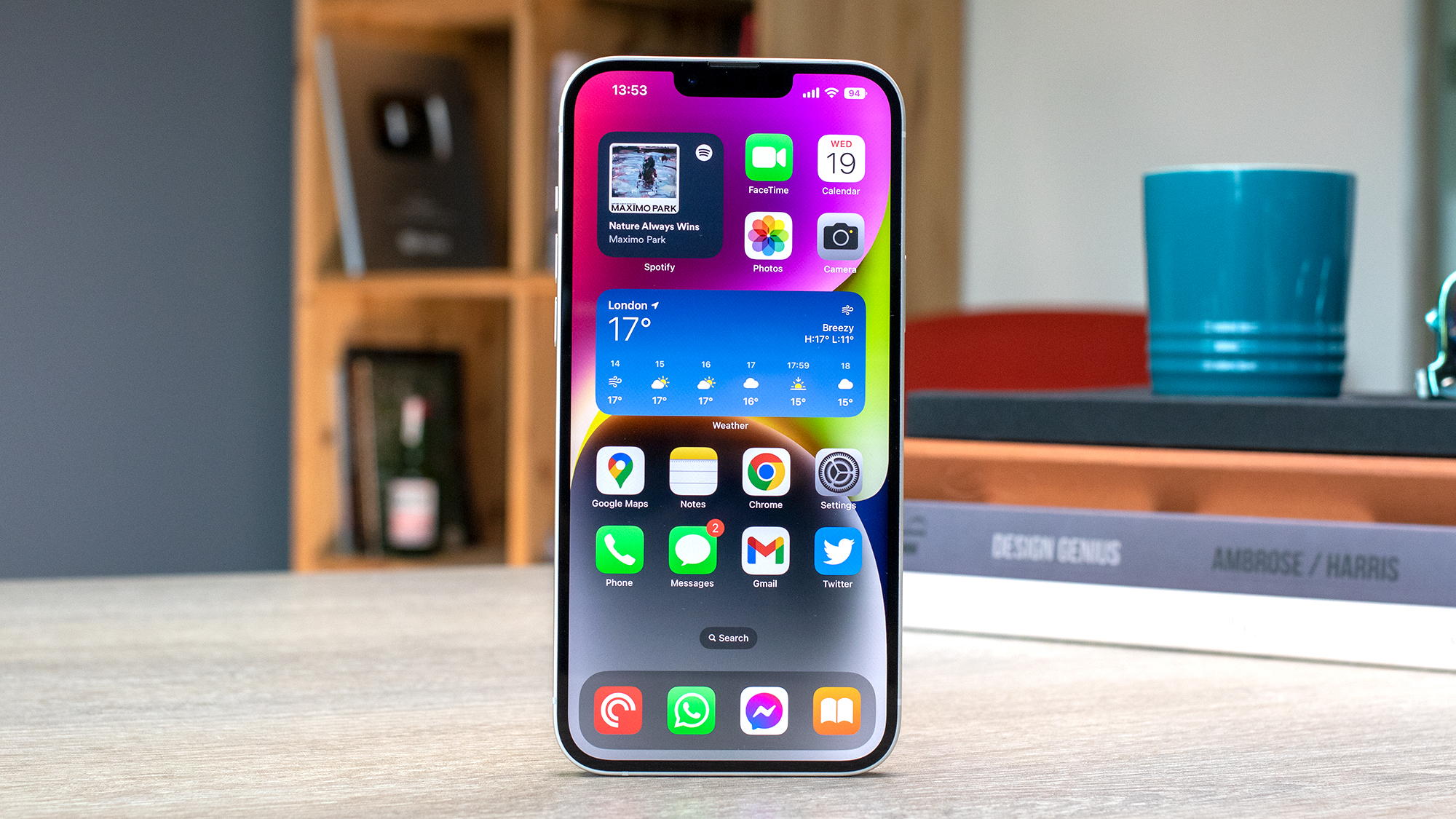
Pros
- Large format at a lower price
- Great battery life
Cons
- No Dynamic Island
- No always-on display
Price When Reviewed:
Now $799
When it was introduced as a brand new model in 2022, the iPhone 14 Plus rocked the boat a bit because it meant that people who might have chosen the iPhone 14 Pro Max, because they wanted a big iPhone, now had a choice. They could save a decent amount of money and purchase a new iPhone with standard features. Or, to look at it another way, they could save money and get more storage by choosing a 512GB iPhone 14 Plus over a 256GB iPhone 14 Pro Max. For some, more storage will trump additional Pro features.
Now Apple has dropped the price of the iPhone 14 Plus to $799/£799 from $929/£949, and slotted it in below the iPhone 15 Plus at $899/£899. It’s a decent saving if you opt for the older model, or you could get double the storage on the iPhone 14 Plus for the same price as the 128GB 15 Plus.
There are a whole lot of reasons why the iPhone 15 Plus if a better choice, if you don’t need that extra storage (and you might not if you use pay for iCloud). The camera is better, there’s the Dynamic Island, and you’ll get a better processor. But if you want to save money and you want a big iPhone, the iPhone 14 Plus is a good choice.
Read our full
Apple iPhone 14 Plus review
8. iPhone 14 – Good enough

Pros
- Action Mode is a benefit over the iPhone 13
Cons
- No Dynamic Island or always-on display
- Few changes as compared to the iPhone 13
Price When Reviewed:
Now $699 (128GB) | $799 (256GB) | $999 (512GB)
It’s been a few years since Apple last introduced an S iPhone, but the iPhone 14 could just as easily have been called the iPhone 13s. Rather than upgrading the processor to the A16 Bionic, as seen in the iPhone 14 Pro (and Max), the iPhone 14 (and Plus) instead features the A15 Bionic, albeit the variant from the iPhone 13 Pro, which means it has an extra graphics core compared to the iPhone 13, which is still on sale.
The fact that the iPhone 13 is still on sale, and similar in so many ways, is the biggest challenge facing the iPhone 14. If you are looking for a cheaper iPhone upgrade there are two very similar iPhones: one of which will save you $100/£100.
But there are some features offered by the iPhone 14 that might justify the extra $100/£100 if they appeal to you. The cameras are by far the biggest difference between the iPhone 14 and iPhone 13–the newer model includes a faster aperture (ƒ/1.5 rather than ƒ/1.6) and a larger sensor on the main camera to bring better overall performance and improvements in low-light shooting. The iPhone 14 also benefits from a new Photonic Engine computational system that helps capture more detail in challenging light and aids features such as Foreground Blur. This isn’t just about getting better low-light photos – you don’t have to hold the iPhone still for as long, which is a real bonus.
The Action Mode is another bonus feature that makes the iPhone 14 a better phone than the iPhone 13. Action Mode means you can video while walking, or even running and get a steady result. It’s a fun feature that people will probably take advantage of. The selfie camera on the front is also improved on the iPhone 14, with a bigger aperture and autofocus.
There are other features that the iPhone 14 offers and the iPhone 13 lacks, such as the Crash Detection feature. If you are in such a situation then you’ll probably be glad to have the 14.
As for how the iPhone 14 compares to the iPhone 15, which also costs just $100/£100 more, the newer iPhone offers a lot for that extra money, including a superior 48MP camera, USB-C port, Dynamic Island, and the A16 Bionic chip. There’s not really a good reason to save money and get the iPhone 14 rather than the iPhone 15, especially when you could save even more and opt for the iPhone 13.
Read our full
Apple iPhone 14 review
That’s the low down on every iPhone Apple sells as of fall 2023, but there are a few iPhones that Apple no longer sells, but are worth considering should you see them on sale. Also read our Best iPhone Deals to get a good price on all iPhones at stockists near you.
Best iPhones Apple doesn’t sell anymore
If you are lucky enough to see the iPhone 14 Pro or iPhone 14 Pro Max on sale at a good price we still recommend these handsets. You may still be able to find the iPhone 13 Pro or iPhone 13 Pro Max, which would be superior to the iPhone 13 and similar to the iPhone 14. And if it’s a small iPhone you want, and you see an iPhone 13 mini at a good price, then it could be the iPhone for you.
The iPhone 14 Pro (and Max) gained the always-on display and Dynamic Island. Implementation of the always-on display is excellent and Dynamic Island a revelation.
Thanks to the always-on mode the time and date, lock screen widgets and notifications remain visible when your phone isn’t in use. Apple dims the screen significantly, but there is a small impact on battery life. If you place your iPhone screen down on a table, or leave the room while wearing a connected Apple Watch, the screen will turn off.
There are other improvements to the screen tech. The most significant: the iPhone 14 Pro can crank up to 2,000 nits in bright sunlight so you can see the screen on a sunny day.
There is a 48MP main wide-angle camera and an f/1.78 aperture. These combine with the new Photonic Engine to create better low-light photos. You can take 48MP shots if you shoot in ProRAW. There are improvements to macro photography (which can now also be used for video).
The front camera has a f/1.9 aperture (up from f/2.2) and autofocus (the same update is available on the iPhone 14). Video recording offers support for 4K at 30fps in Cinematic Mode and Action Mode that stabilizes video recorded on the move (also on iPhone 14).
The iPhone 14 Pro (and Max) got a A16 Bionic chip, which was a newer generation of chip than the A15 Bionic inside the iPhone 14. It’s the same chip as found in the iPhone 15. Our tests suggested that it’s not a huge leap up from the A15. In our battery tests the 14 Pro lasted an impressive 9 hours and 44 minutes, which was about half an hour longer than the iPhone 13 Pro. Apple claims 23 hours battery life for the iPhone 13 Pro based on its own tests.
The iPhone 14 Pro, like the whole iPhone 14-series can detect if you are in a car crash. There is also a satellite SOS feature, so your iPhone can contact the emergency services if there is no cellular service. That’s only available in the U.S. and Canada right now. In the U.S. the iPhone 14 series has no SIM tray, meaning that you’ll need an eSIM.
There’s a lot that’s the same when you consider the iPhone 14 Pro and iPhone 14 Pro Max, so many of the features of the iPhone 14 Pro Max are discussed in the section above including the always-on display, Dynamic Island, and the camera improvements. But there are some significant ways that the iPhone 14 Pro Max trumps the iPhone 14 Pro, such as battery life and the larger display. However, choosing between the two phones is really a matter of personal taste: for some the Max is too big, for others the Pro too small.
Like the iPhone 14 Pro, the Max offers the always-on screen. Having an always-on display will mean you can see the time and important notifications without waking the iPhone. There are some battery implications to this, but they aren’t huge – and the battery in the Max is huge: Apple indicates that you can expect 29 hours of video playback on the Max, while the Plus can achieve 26 hours in the same test. In our tests (Geekbench 4) the iPhone 14 Pro Max’s battery lasted 12 hours and 40 minutes–about an hour longer than the iPhone 13 Pro Max and much longer than the 14 Pro, which lasted 9 hours and 44 minutes. We haven’t yet tested the battery in the iPhone 14 Plus, but we know it to be the same 4,325 mAh battery as the Pro Max, so it is feasible that battery life, in our tests, could be even better since it lacks power guzzling features such as ProMotion and the Always-On display.
If you run out of battery all iPhones can take advantage of fast charge with a USB-C 20W power brick (which you’ll have to purchase separately). The larger phones take 35 minutes to charge to 50%, while the smaller phones take 30 minutes for the same – but obviously those batteries are smaller.
There are a variety of camera updates that the complete iPhone 14-series benefited from, including the ability to take 48MP photos – but this is now a feature of the iPhone 15 too. Note that the camera doesn’t take 48MP photos by default, only when in ProRAW mode. Also, 48MP photos take up a lot of space – so you’ll need an iPhone with as much memory as you can afford if you want to use the feature.
You do get more for your money with the iPhone 14 Pro Max: a larger phone has more room for a bigger battery, and the extra screen space is attractive to many. However, the bulk of the iPhone is off-putting for many and this is the most expensive handset Apple sells – especially if you need more than 128GB storage.
The iPhone 13 Pro has the exact same camera as the iPhone 13 Max, so pick the size that suits you.
Compared to the regular iPhone 13, the Pro models also had a much larger sensor on the standard Wide camera, and a wider aperture, too (f/1.5 vs. f/1.6). They also had the telephoto camera that the regular iPhone 13 lacks, with a more useful 3x zoom instead of the 2x zoom found on older models. And the Ultra-Wide camera had a wider aperture along with a 2-centimeter minimum focal distance, which allows you to take awesome macro shots.
The iPhone 13 Pro Max had the fastest new A15 processor with 5 GPU cores instead of 4 on the standard iPhone 13. This extra core really comes into its own in high-end 3D games. While the iPhone 13 Pro and iPhone 13 Pro Max have identical performance, the huge battery in the iPhone 13 Pro Max means epic battery life (and nothing drains your battery like gaming).
There is one more iPhone 13 generation model you may want to try to get your hands on. The iPhone 13 mini.
If you want a small iPhone, and some people do, the iPhone 13 mini is a great option, although now discontinued by Apple. The iPhone 13 mini has a 5.4-inch screen, which is bigger than the iPhone SE’s 4.7-inch screen, but the iPhone size isn’t all that different.
The iPhone 13 mini is the only small iPhone with Face ID and it also offers a lot that the iPhone SE lacks, such as better water resistance (the SE offers Water resistance to a depth of 1 meter for up to 30 minutes while the iPhone 13 mini offers Water resistant to a depth of 6 meters for up to 30 minutes). The iPhone 13 mini features a the Ceramic Shield front, which the iPhone SE lacks, so the glass on front of the 13 mini should be less likely to smash the first time you drop it.
The iPhone 13 mini has a much better screen than the SE as well. It’s a Super Retina XDR display, that’s OLED and offers HDR. Resolution is 2,340-by-1,080-pixels at 476 ppi, there’s a 2,000,000:1 contrast ratio, 800 nits max brightness (typical), 1200 nits peak brightness (HDR). In contrast the SE has a Retina HD display that’s LCD with IPS technology, 1,334-by-750-pixel resolution at 326 ppi, 1400:1 contrast ratio, and just 625 nits max brightness (typical).
There’s a nice bunch of color finishes to choose from with the iPhone 13 mini: Green, Pink, Blue, Midnight, Starlight, Red. The SE only comes in Midnight, Starlight and Red.
One final, and key, reason to choose the iPhone 13 mini if you want a small iPhone is that the cameras are much better than those on the SE. The mini offers two cameras on the rear while the SE only offers one camera.






